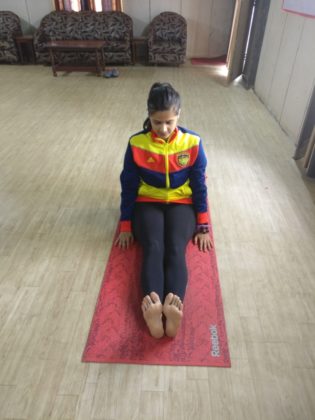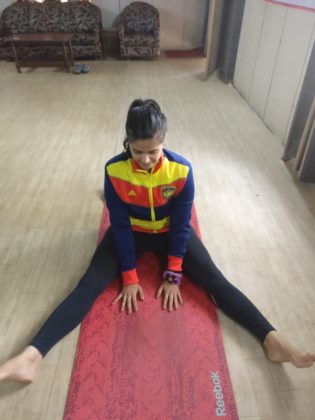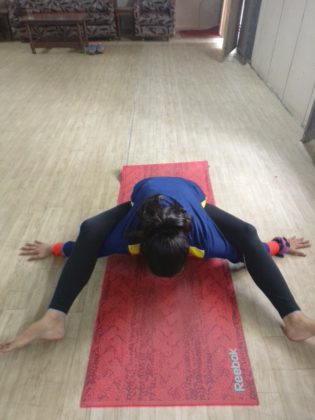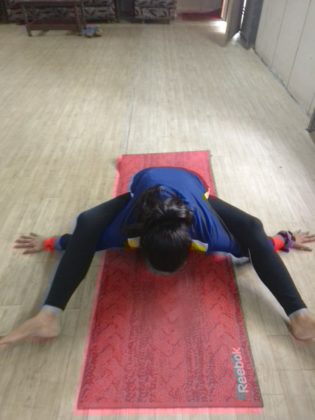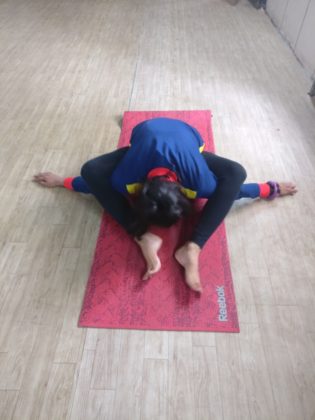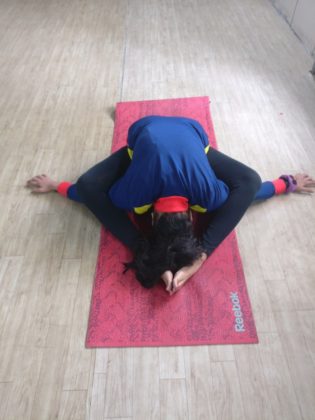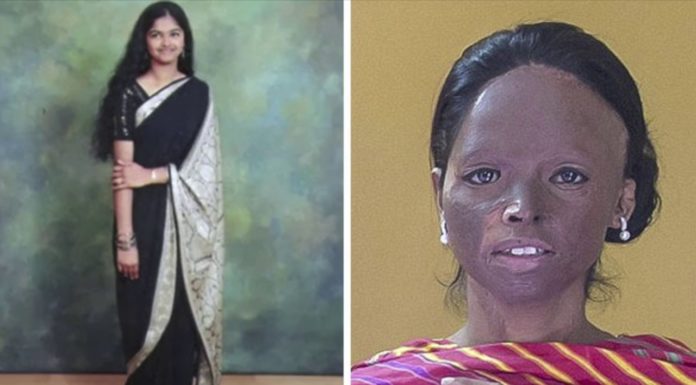The whole course of yoga is all about knowing the art of ignoring the fluctuations in life. The tortoise or the Kurma in Sanskrit is an animal that definitely inspire us to be peaceful and steady in our life. And like many asanas in yoga sutra, this asana helps us in knowing our inner world. In the Kurmasana we make a shell from our body and align our body like a tortoise. Initially the focus comes on the body as we align it to take the form of a tortoise but later on the focus is driven in moving the concentration inward. The asana helps in reaching the condition of pratyahara, which is one of the eight limbs of Patanjali’s yoga sutra. Praytahara simply means the sense of withdrawal; withdrawing from the swirling distractions in the world around you. Like the tortoise, this asana helps you in experiencing the pratyahara by drawing limbs of your perceptions into the shell of the limitless possibilities within you.
Before Kurmasana warm up the thighs, hips and back body for the sequence. Do the camel pose, Uttanasana, chair pose, Downward facing dog, utthita parsvakonasana etc.
Let’s learn how to do the Kurmasana or tortoise yoga pose at home:
After a good warm up, of back, hips and thighs, sit on the floor in the Dandasana. That is, sitting with legs stretched out in front.
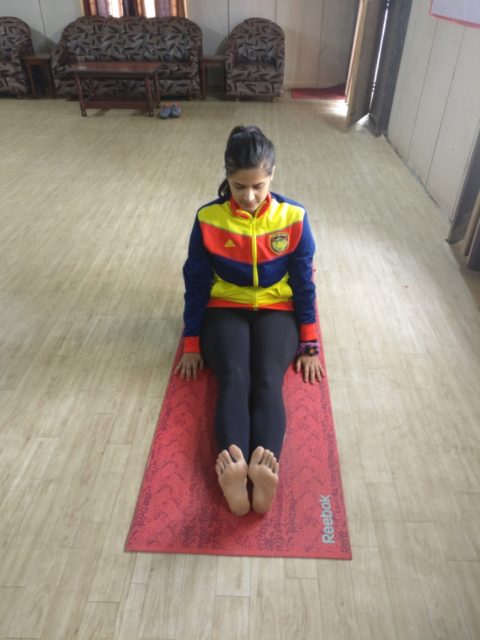
Spread the legs about one and half feet apart.
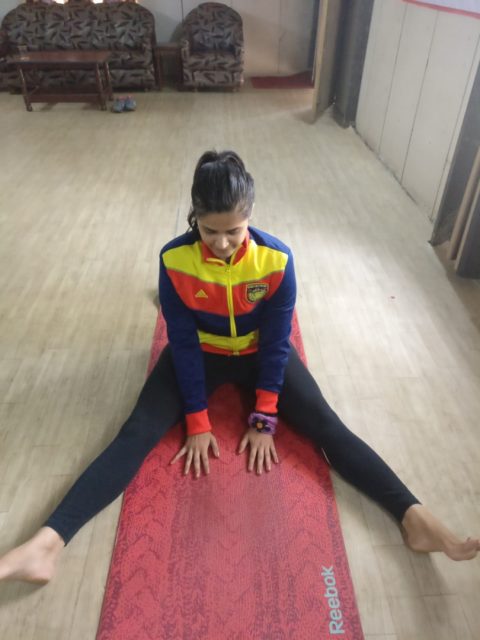
Bend the knees and lift them up. This will be done by putting the feet down and moving them a little towards the hips.
Exhale and bend the trunk forward and insert the hands one by one under the knees. Stretch the hands completely by making the elbows straight.
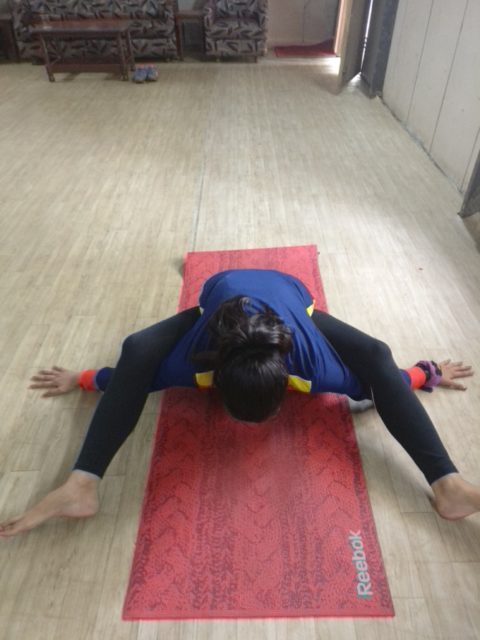 Go forward with the head and chest so you don’t arch your back. Slowly as you feel comfortable with the position of your hands, stretch the legs straight. You will notice that the knees would touch the upper arms near armpits. If this is not happening open the legs wider.Gradually intensify the stretch, breath by breath. Every time you exhale, squeeze the stomach in and move forward from your trunk. Remember to keep the back as straight as possible. This will help in avoiding straining the back. Go forward until the chest, head or chin touches down. Hold the position for some time. This is the basic level of the tortoise pose.
Go forward with the head and chest so you don’t arch your back. Slowly as you feel comfortable with the position of your hands, stretch the legs straight. You will notice that the knees would touch the upper arms near armpits. If this is not happening open the legs wider.Gradually intensify the stretch, breath by breath. Every time you exhale, squeeze the stomach in and move forward from your trunk. Remember to keep the back as straight as possible. This will help in avoiding straining the back. Go forward until the chest, head or chin touches down. Hold the position for some time. This is the basic level of the tortoise pose.
Let’s learn how to do the advance versions of the Kurmasana.
Continuing from the above steps, face the palms up by turning the wrists. Keeping the legs, shoulders, head in the same direction, move the hands back and stretch the straight. Stay in this position for 30 seconds.
This is the second stage of Tortoise yoga pose.
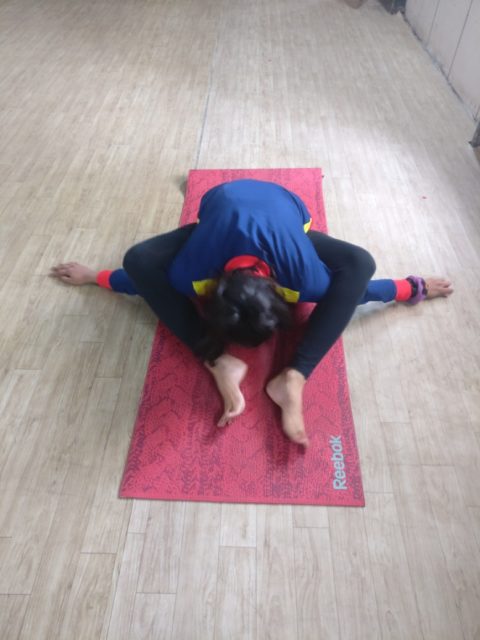 Bend and lift the knees, chest and chin up. Move the hands behind the back by bending the elbows and lastly clasp the hands.
Bend and lift the knees, chest and chin up. Move the hands behind the back by bending the elbows and lastly clasp the hands.
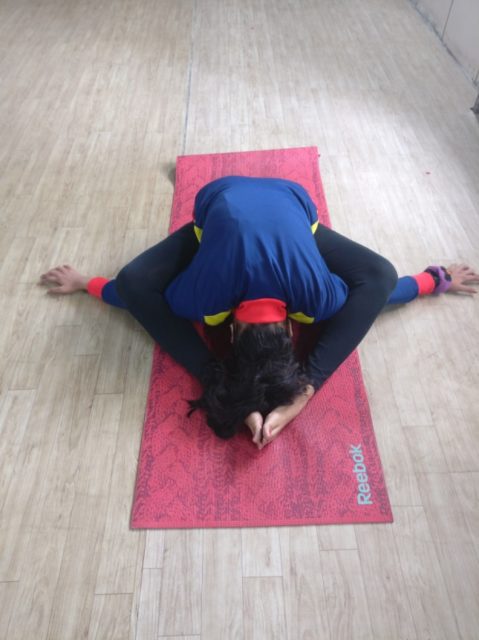 Now move the feet and interlock them together. Place your head in the space created here. Your to of the head should be touching your heels. This stage is the last stage of Kurmasana and is called the reclining tortoise pose or sputa Kurmasana.
Now move the feet and interlock them together. Place your head in the space created here. Your to of the head should be touching your heels. This stage is the last stage of Kurmasana and is called the reclining tortoise pose or sputa Kurmasana.
Benefits of Kurmasana (Tortoise Pose) :
- This is definitely a sacred pose for yogi as described in Hindus holiest book,Bhagwat Gita. Lord Krishna mentioned about the art of tortoise to withdraw it limbs inside its shell, to withdraw himself from any perceptions and notions. In this pose the body resembles a tortoise. Since the four limbs of the body is pressed, the head is down the body automatically drives attention inside and deepens the inner awareness.
- Kumrasana tones the spine, activates the abdominal organs and keeps the body energetic.
- It calms the brain cells and when practiced for longer durations, this asana makes the body feel extraordinarily refreshed.

















